Welcome to This Date in Aviation History, getting of you caught up on milestones, important historical events and people in aviation from February 2 through February 5.
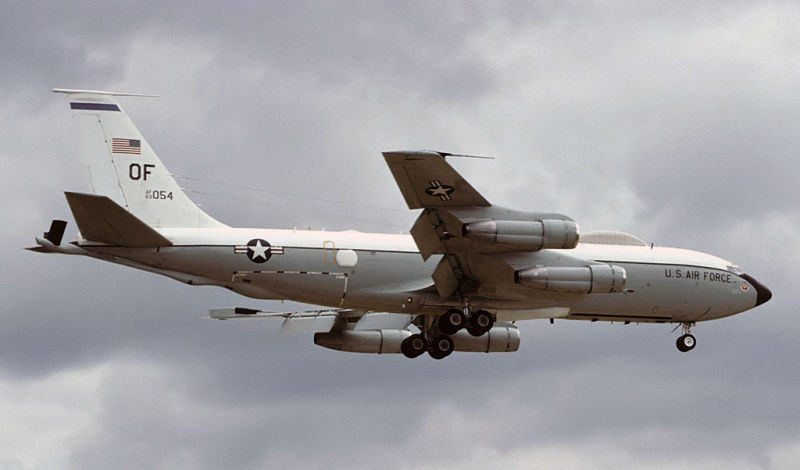
February 3, 1961 – The US Air Force Strategic Air Command commences Operation Looking Glass. During the Cold War, Russia and the US stood toe to toe, and the conflict of differing ideologies left the world teetering on the brink of nuclear war. Though the doctrine of Mutual Assured Destruction meant that any launch of nuclear weapons meant the likely end of the world, it was still imperative that any launch of nuclear weapons be detected early, so that a counterstrike could be loosed before the destruction of essential command and control facilities. But in the event that American ground control sites were destroyed, the US still maintained a system that would make a retaliatory strike possible, with the command to launch coming from an aircraft. In 1961, the US Air Force Strategic Air Command initiated Operation Looking Glass, which ensured that a command and control aircraft was in the air 24 hours a day, 365 day a year, and that the crew of that aircraft would be able to launch American missiles if ground-based crews had been incapacitated or killed.
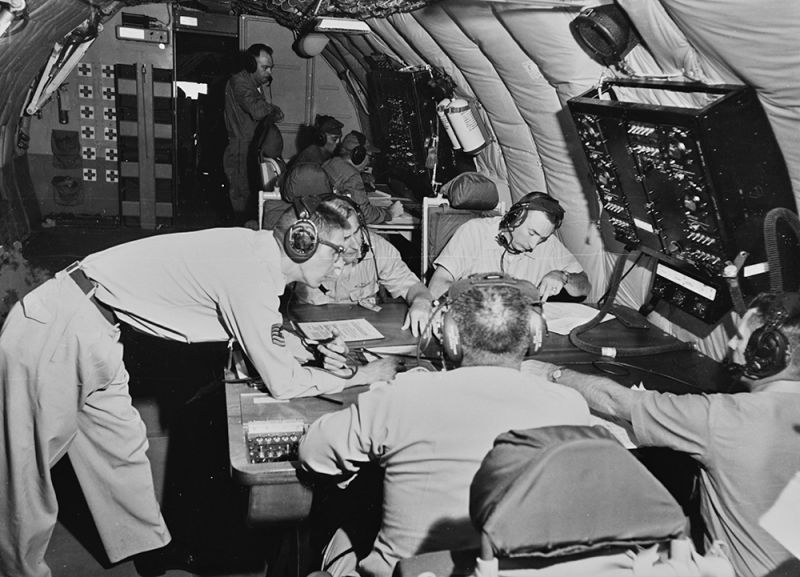
The operation was named Looking Glass because the aircraft mirrors the capability of the ground based command structure. The Boeing EC-135 had all the communications gear necessary to contact US missile sites and order a launch. If those sites were unable to respond, the missiles could also be launched remotely from the air. The first of these round-the-clock flights took off on February 3, 1961, from Offutt Air Force Base in Nebraska. The EC-135 was a highly modified version of the C-135 Stratolifter transport aircraft. On board were two pilots, a refueling specialist, and approximately 20 other personnel to operate the communications equipment. But the most important person on those flights was the flag officer—either an Air Force general officer or a Navy admiral—who had the authority to order a launch of American missiles if the need arose. Looking Glass could also communicate with submerged nuclear submarines by extending a 2.5 mile long trailing wire antenna that broadcast via the Survivable Low Frequency Communications System. This allowed the officer on board the EC-135 to issue Emergency Action Messages to American submarines and order the launch of their missiles.
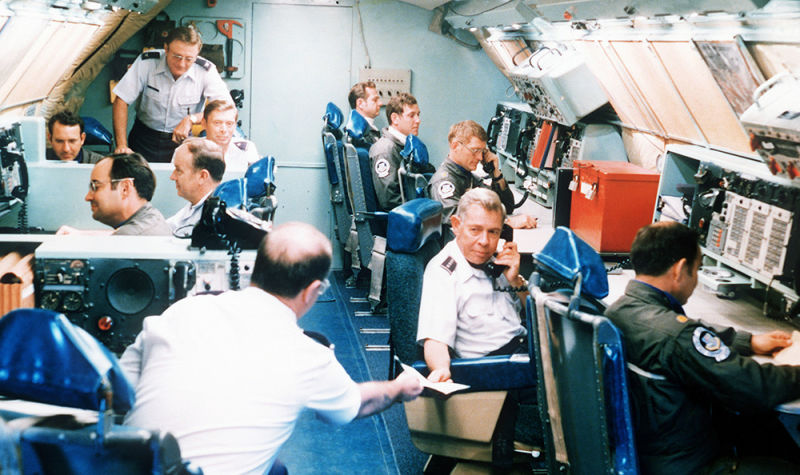
At Defcon 2 or higher, meaning that nuclear war was the next step or that an attack was imminent, the Looking Glass pilots were required to wear an eye patch over one eye. If a nuclear explosion took place near enough to blind them with the flash, then they still had one good eye to fly the plane. Later, pilots were given special visors that instantly turned opaque in the event of a bright flash of light and then cleared.
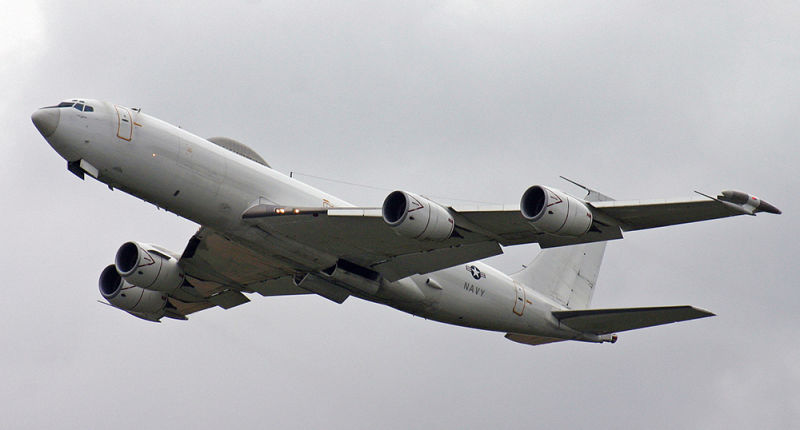
Looking Glass flew continuously for more than 29 years, with only one 8-hour break in service. During that time, when no Looking Glass aircraft could take off from either Offutt AFB or Ellsworth AFB in South Dakota, the mission was covered by a Boeing E-4 Nightwatch aircraft. On July 24, 1990, Looking Glass ceased its continuous flights, but it remains on alert 24 hours a day should the need arise. In 1998, the EC-135 was retired in favor of the US Navy’s Boeing E-6B Mercury, a modified Boeing 707-320.

February 4, 1948 – The first flight of the Douglas D-558-2 Skyrocket. Following the first powered flight in 1903, aircraft designers made incredible advances in a very short time, and perhaps the greatest impetus driving these aeronautical pioneers was the quest for ever greater speed. With the arrival of reliable jet engines during WWII, new jet-powered aircraft could outpace even the fastest propeller planes, and rocket planes pushed the boundaries speed even farther. The next barrier to break was the speed of sound, or Mach 1, and some believed that it could never be done, that and aircraft would simply be uncontrollable at such incredible speed. But once Chuck Yeager passed that milestone in 1947 flying the Bell X-1, the bar was raised once again. The next milestone to reach was Mach 2.
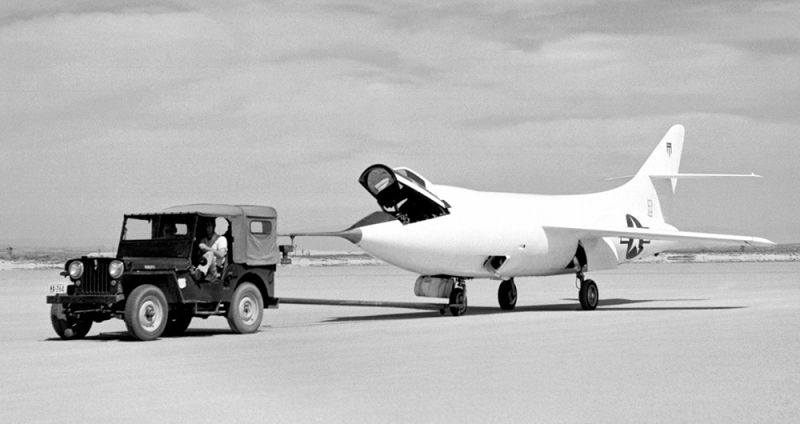
The Douglas Skyrocket was the second phase of a three-part Navy program to construct both jet- and rocket-powered aircraft to explore supersonic flight. The first stage in that program produced the D-558-1 Skystreak, a straight-winged, turbojet-powered research aircraft that first flew in 1947 and managed Mach 0.99, only exceeding Mach 1 in a dive. But discoveries on the benefits of swept wings, much of it gleaned from data captured from Germany at the end of the war, sent Douglas engineers in a new direction with the D-588-2 Skyrocket. Unlike the Skystreak, the Skyrocket was much more aerodynamic, with 35-degree swept wings, swept tail, and a sharply pointed nose. At first, it was powered by a Westinghouse J34 turbojet, and the first flight tests were made using that engine configuration. The Skyrocket took off from the dry lake bed at Edwards Air Force Base assisted by rockets, and the experimental aircraft undertook numerous flights to test the Skyrocket’s flight characteristics in transonic and supersonic flight.
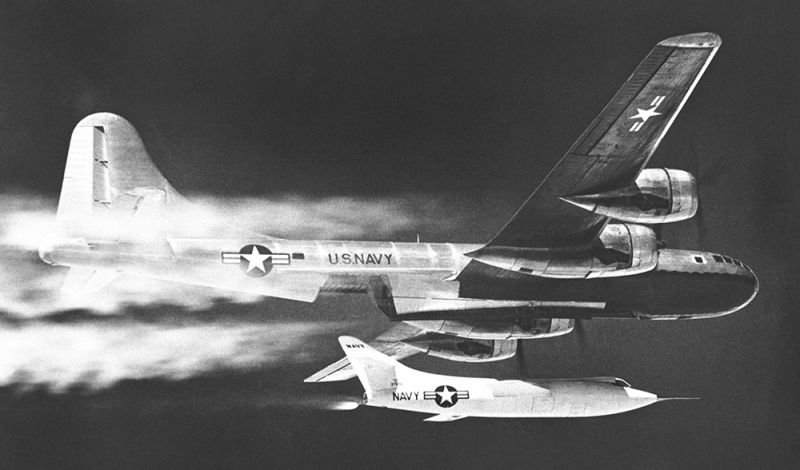
For the next phase of testing, the turbojet was removed and replaced with a Reaction Motors LR8-RM-6 liquid fueled rocket engine, the same engine that powered the X-1, which provided the Skyrocket with 6,000 lbf of static thrust. The rocket-powered Skyrocket was carried aloft by a US Navy P2B, the Navy designation for the Boeing B-29, and a number of flights were taken that brought the Skyrocket very near Mach 2. These flights also set unofficial altitude records in the process (in order to achieve an official altitude record recognized by the Fédération Aéronautique Internationale, the aircraft must take off and land on its own power).
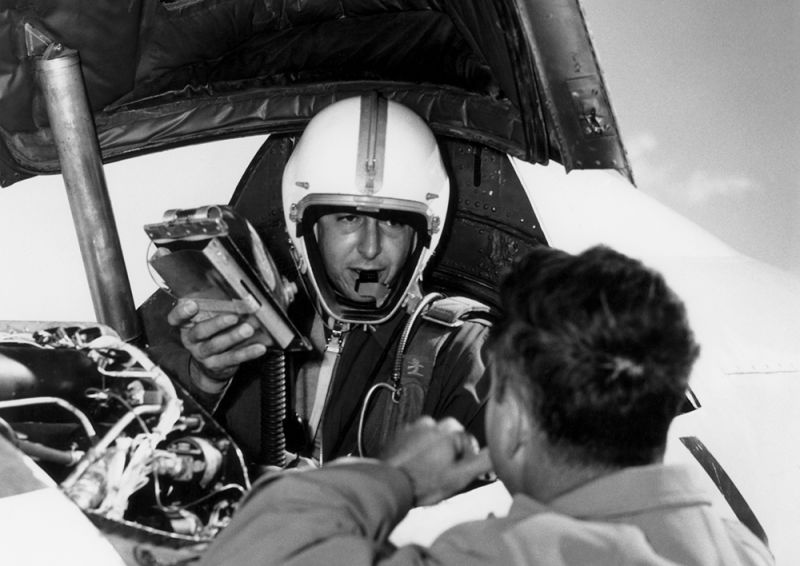
The pressure was now on to break the Mach 2 barrier, but the National Advisory Committee for Aeronautics (NACA), which was running the tests, refused, saying that they were not in the business of setting records. However, NACA finally relented. For the record-setting flight, the Skyrocket was given modified rocket nozzles and filled with chilled alcohol fuel so more could be placed on board. The fuselage was then coated in wax to help reduce drag. After disengaging from the mothership, Navy test pilot Scott Crossfield took the Skyrocket to 72,000 ft, then pushed over into a slight dive and he reached Mach 2.005 (1,291 mph) on November 20, 1953. It was the one and only time that the Skyrocket exceeded Mach 2. All told, the three Skyrockets made 313 test flights throughout the program, and gathered significant data on swept wing flight in the transonic and supersonic regimes, data that would be vital in the design of the next generation of swept wing fighter aircraft. (NASA photos)
Short Takeoff
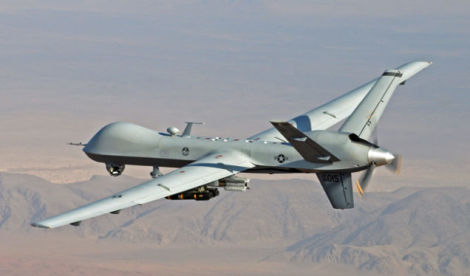
February 2, 2001 – The first flight of the General Atomics MQ-9 Reaper, a development of the earlier General Atomics MQ-1 Predator which had been designed only to perform aerial surveillance. With the Reaper, the US Air Force has the capability to perform both surveillance and attack missions either through remote piloting or autonomous flight. The Reaper is larger and heavier than the Predator, and can carry up to 2,400 pounds of external stores, including Hellfire air-to-ground missiles, GBU-12 Paveway laser guided bombs, and GBU-38 Joint Direct Attack Munition (JDAM). The Air Force is also testing the ability to carry Sidewinder air-to-air missiles. The Reaper has flown against targets in Iraq and Afghanistan, serves with NASA as a research aircraft (where it is called Altair), and with the Department of Homeland Security for border reconnaissance.
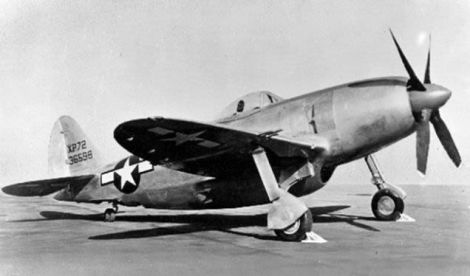
February 2, 1944 – The first flight of the Republic XP-72, an interceptor that was the ultimate development of the Republic P-47 Thunderbolt. The XP-72 was powered by a supercharged Pratt & Whitney R-4360 Wasp Major four-row radial engine, the same one that saw widespread use in large cargo aircraft and bombers. After the maiden flight was made with a standard four-bladed propeller, the XP-72 received a contra-rotating propeller which provided speeds of nearly 500 mph. The Army initially ordered 100 aircraft but, by this late stage in the war, the US no longer needed a high-altitude interceptor and, with the advent of jet-powered fighters on the horizon, the Army canceled the order after only two XP-72s were built.
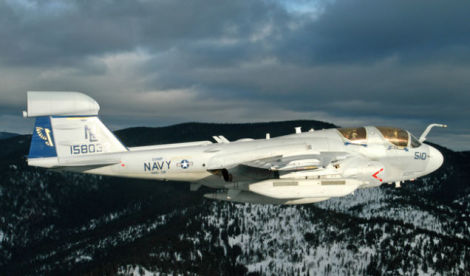
February 3, 1998 – A US Marine Corps EA-6B Prowler cuts a gondola cable in Italy, killing 20 people. While flying through a canyon near the Italian town of Calavese during low-level flight training, the pilots of the Prowler flew below the “hard deck,” or the minimum altitude for safe operation, so low that the aircraft struck the cable supporting a cable car. The cable car then plunged 260 ft to the ground, killing the 20 occupants. During the ensuing investigation, the pilots admitted that they flew so low to “have fun” and to film the scenery, making a video which the pilot destroyed after returning to base. The crew was acquitted of involuntary manslaughter and negligent homicide, yet they were found guilty of obstruction of justice and conduct unbecoming an officer for the destruction of evidence and were dismissed from the Marine Corps.

February 3, 1984 – The launch of Space Shuttle Challenger on STS-41-B, which included the first untethered spacewalk. STS-41-B was the fourth flight of the Shuttle Challenger and, while its main mission was the deployment of two communications satellites, the flight was notable for the first use of the Manned Maneuvering Unit (MMU), a device that fit over the astronaut’s life support backpack and propelled the astronaut using bursts of gaseous nitrogen. Mission Specialist Bruce McCandless took the inaugural flight, followed by Mission Specialist Robert Stewart. The MMU was used on two subsequent flights before its retirement. A smaller system has since been developed, called the Simplified Aid for EVA Rescue (SAFER), but it is only intended for emergency use should an astronaut become untethered from the orbiter.
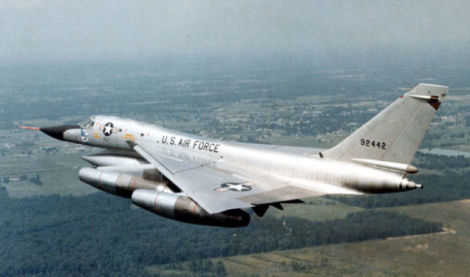
February 3, 1964 – Operation Bongo II commences over Oklahoma City. With the advent of supersonic aircraft, and the possibility of regular supersonic transport over the United States, NASA, the FAA, and the US Air Force conducted Operation Bongo II to measure the effect of sonic booms on buildings, as well as public attitude towards the repeated sonic booms. They also hoped to develop methods to predict the effect of the booms and gather data for insurance companies. For a six-month period, a Convair B-58 Hustler flew 1,253 supersonic flights over Oklahoma City, averaging just about seven sonic booms per day. Initially tolerant of the noise, residents soon began to resent the tests, and 147 windows were broken in the city’s tallest buildings. The negative publicity from the program, as well as the FAA’s botched handling of damage claims, were cited as part of the decision to cancel the Boeing 2707 supersonic airliner in 1971.

February 3, 1959 – A crash claims the life of Buddy Holly, Ritchie Valens, and J.P. “The Big Bopper” Richardson. Tired of riding in a cold tour bus, Holly chartered a Beechcraft Bonanza (N3794) to take himself, Valens and Richardson from Clear Lake, Iowa to Moorhead, Minnesota. The plane, piloted by Roger Peterson, took off at 12:55 am in snowy conditions with six mile visibility, though conditions were deteriorating rapidly. Peterson also was not given an accurate weather report, nor was he certified to fly in IFR conditions. He had also failed an instrument checkride nine months prior to the accident. The Bonanza was equipped with a Sperry altitude gyroscope rather than a traditional artificial horizon, and the two instruments read opposite of each other. Just five minutes after takeoff, and less than six miles from the airport, the plane crashed, killing all on board. The Civil Aeronautics Board stated the crash was caused by “the pilot’s unwise decision to embark on a flight” that required an IFR rating, but also listed the gyroscope and the pilot’s lack of awareness of the worsening weather as contributing factors.
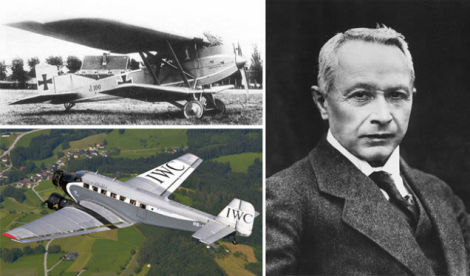
February 3, 1935 – The death of Hugo Junkers. Born on the same date in 1859, Junkers was a German engineer and aircraft designer who pioneered the development of all-metal airplanes in Germany. His company, Junkers Flugzeug und Motorenwerke AG, played a significant role in the development of the German aircraft industry between the World Wars, and Junkers created numerous all-metal aircraft for Germany during WWII while pioneering the use of duralumin in airplane construction. But perhaps his greatest achievement was the Junkers Ju-52, a three-engine, corrugated metal passenger plane that helped create the business of civilian air travel It served the Luftwaffe throughout WWII, and influenced other aircraft designs such as the Ford Trimotor. Although his company continued producing aircraft in his name for the Nazi war effort, Junkers had already been forced out of his company by 1934, and died the following year.
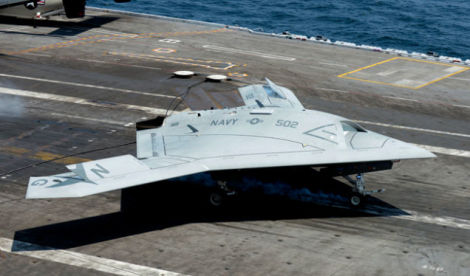
February 4, 2011 – The first flight of the Northrop Grumman X-47B, an unmanned combat air vehicle (UCAV) developed for carrier operations. The X-47B made its first launch from USS George H.W. Bush (CVN 77) on May 14, 2013, performed the first autonomous touch-and-go landings three days later, and made the first arrested carrier landing of a UCAV on July 10. The X-47B also demonstrated autonomous aerial refueling in April of 2015. The X-47 program has finished, and the Navy plans to open the competition for a deployable fleet of Unmanned Carrier-Launched Airborne Surveillance and Strike (UCLASS) aircraft in 2016, with regular operations beginning in 2020.
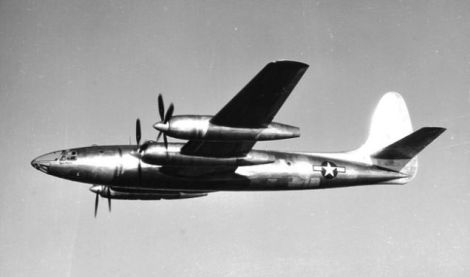
February 4, 1946 – The first flight of the Republic XF-12 Rainbow. Designed by Alexander Kartveli, who also designed the P-47 Thunderbolt, the Rainbow was intended for use in the Pacific as a high-flying reconnaissance plane to find targets for allied bombers. The Rainbow was said to “fly on all fours,” which meant that it had four engines, a 4,000 mile range, could fly at 40,000 feet, and could cruise at 400 mph. It remains the fastest piston-powered aircraft of its size. Unfortunately for the Rainbow, it came at the same time as the emerging jet engine and, by the end of the WWII, the US no longer had a need for an aircraft of its type. Only two Rainbows were built before the project was canceled.
Connecting Flights
If you enjoy these Aviation History posts, please let me know in the comments. And if you missed any of the past articles, you can find them all at Planelopnik History. You can also find more stories about aviation, aviators and airplane oddities at Wingspan.